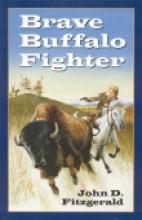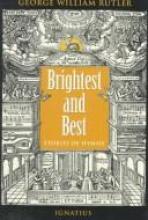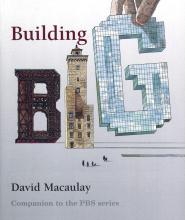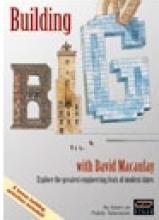No name
Brave Buffalo Fighter
Brave New World
Brendan the Navigator
Bright Candles
Brightest and Best
This book consists of a fine selection of favorite hymns, including musical notation, and rather detailed stories about the authors of the text, the composers of the music, giving the student a good idea of how and when the music came about.
The author's purpose in writing the book "was to restore attention to some of the finest hymns, in the hope that they might replace the miserable afflictions that keep cropping up in ... 'missalettes'... It seemed to me that hymns might be better appreciated if we knew a little more about the stories behind them: first of all, who wrote them and in what circumstances." (From the Introduction).
Approximately 100 hymns are included. I'd like to note that the text of the hymns is often not the text that Americans today are most familiar with. There's a good reason for this. Over the years, the text of many hymns has been "simplified" which has often detracted from its meaning and significance. Fr. Rutler would like us to appreciate the songs as they were originally written.
What a wonderful Catholic resource for real music appreciation in the homeschool. What we give our children today in this realm may have a significant impact on turning back to more beautiful and reverent music in the future. Please note that there are some hymns that were not written by Catholics. Fr. Rutler explains in the introduction: "If the following selection of hymns joins to these great orthodox souls a Lutheran such as the war-ravaged Melchior Teschner ... this is testimony to the wonders God accomplishes through those who seek his goodness...some of these in their day wrote of doctrine more sturdily than [many of today's composers]."
Brother Joseph: The Painter of Icons
Tom was an ordinary boy who loved being outdoors and drawing whatever he saw. Although Tom found school distasteful, his teacher, Sister Aquinas, saw artistic talent in him and encouraged him and lent him books on religious art. He discovered that his favorite artist was Fra Angelico. He attended a high school seminary and discovered that he wanted to be a monk. There he becomes Brother Joseph and finds that his artistic talents are put to good use. "He knows that he is busy about the right things, happy that as an artist he is able to give so much joy and peace to others with his icons."
This is a nice story about art, vocation and using one's talents for God and others. My children especially enjoyed the charming verses that run through the monk's head - "My brush will up and downward go, I'll paint like Fra Angelico!"
Building Big
Originally written as a companion to the PBS series of the same name, Building Big stands on its own quite well — a good thing, because the videos are no longer in production.
If you are familiar with David Macaulay's other books, such as Castle and Cathedral, also reviewed here, Building Big has a similar visual appeal with drawings that delve into the details of the structures in a way that is both fun and informative. I would especially recommend this book to kids (and adults!) ages 10 and up who enjoy building toys such as Legos, K'nex, or wood blocks, as well as to those who are interested in historical structures or how things are made. Younger children who have similar interests will also enjoy the pictures, especially if a parent summarizes the text for them.
The book covers BIG Civil Engineering structures ranging in construction date from ancient Rome through the 20th century. There are sections covering bridges, tunnels, dams, domes, and skyscrapers, with four to ten chapters in each section, each covering the design and construction of an outstanding example of that type of structure. The examples are chronologically sequenced and show important steps in the history of the development of techniques and technology.
The combination of text and illustrations does an admirable job of making learning about building on a large scale enjoyable. Many excellent drawings and diagrams explain how particular structures were built, showing relevant details and the techniques used. They also explore why certain materials and designs were chosen as solutions to the problems specific to the desired function, siting, and other constraints.
Along with hands-on construction toys, books like this one can help kids develop a gut feel for forces, loads, and so forth, which are very important to future work in engineering or construction (even small scale construction like home improvement projects). Dh and I are both engineers, as are two of our sons. We have been surprised that many engineering students today lack that intuitive sense — possibly a consequence of more "virtual" play and less physical play — and would love to see that trend reversed.
Building Big with David Macaulay
This set of five DVDs by artist/architect David Macaulay provides many hours of insightful entertainment and a great introduction to science and technology on a practical level. Each themed film - Bridges, Skyscrapers, Tunnels, Domes and Dams - provides an in-depth historical treatment of the particular structure, interesting stories and overviews from famous structures, and basic scientific principles involved in each project.
The set features lots of great location shoots with David Macaulay narrating interesting stories and pointing out details of each site.
To give you an idea, "Tunnels" covers aqueducts and water-carrying tunnels of Ancient Rome, early canal and train tunnels of the 19th century (particularly in England and the U.S.), archaic and modern methods of tunnel digging (particularly under rivers), issues involving tunnel safety (both during the project and during use afterwards) with a special emphasis (in all areas) on the building of the Channel Tunnel in the 1990s between England and France. Each video also includes a "Building Small" segment and pamphlet so that families can tackle simple science projects at home that demonstrate principles of architecture.
Our family has really enjoyed these movies - from the four year old all the way up to Mom and Dad. The material is substantial, but easy to understand (particularly with the excellent use of computer graphics and artistic sketches).
I would recommend parental supervision with young children, at least for the first viewing. There are a few things that might be scary for little ones, such as a spooky introduction to the Tunnel show and some photos from an airplane crash in to the Empire State Building that might be a little disturbing. There are also some points in other movies that would be worthy of discussion, such as the environmental issues that come up in the Dams movie. Those are all the "sticky" parts I can remember at this point. I am hoping to view them again soon and will add to this list as needed. Overall, I consider the series to be very worthwhile and enjoyable.
Set of 5 DVDs or Videos (approximately 1 hour each)
Update April 2024: These videos are now "out of print" and difficult to purchase. However, I'm planning to review the book of the same title. Stay tuned. :)
Building on Nature
Like most art students and lovers, I have had mixed feelings about the architecture of Gaudi all my life. When our oldes son visited Barcelona and sent pictures of Gaudi buildings, I planned on learning more about him. Now I find this new and remarkable picture book telling children about a man who was perhaps little understood during his lifetime.
What I find in the warmly-illustrated pages is a likeable man! A devout Catholic, a lover of nature and of poverty, married to his life's hard work. Perhaps his art isn't traditional, in any shape or form, but there is a genuine aspect of Gaudi's work that one can't help being attracted to.
This picture book does a good job of bringing his life and work to young children and it is a fun read aloud, written in the present tense, in poetic lines. The author's note adds important biographical information including the fact that he was a very early recycler, using all sort of discarded materials in his buildings. A list of websites is also listed. I found this list of buildings with photos very useful!









